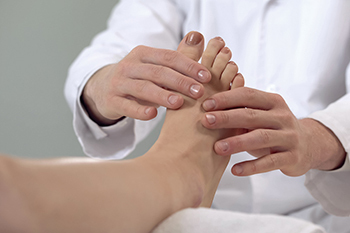
There are many bones located in the foot that each play an important role in helping the foot function and move properly. The cuboid bone is one such bone. Located on the outer side of the foot in the midfoot area, this small bone is almost cubical in shape. It is critical to the foot because not only does it provide stability, it also facilitates sufficient weight distribution throughout the feet. It is important to note that the cuboid bone additionally aids in toe movement. A number of ligaments are also attached to the cuboid bone, including the birfurcate ligament and the cuboideonavicular ligament. The cuboid bone alone does not usually fracture by itself in the foot. However, it is susceptible to a condition known as cuboid syndrome, which can move the bone out of alignment. If you want to learn more about the cuboid bone, make an appointment with your local podiatrist today.
If you have any concerns about your feet, contact one of our podiatrists from Community Foot Specialists. Our doctors can provide the care you need to keep you pain-free and on your feet.
Biomechanics in Podiatry
Podiatric biomechanics is a particular sector of specialty podiatry with licensed practitioners who are trained to diagnose and treat conditions affecting the foot, ankle and lower leg. Biomechanics deals with the forces that act against the body, causing an interference with the biological structures. It focuses on the movement of the ankle, the foot and the forces that interact with them.
A History of Biomechanics
- Biomechanics dates back to the BC era in Egypt where evidence of professional foot care has been recorded.
- In 1974, biomechanics gained a higher profile from the studies of Merton Root, who claimed that by changing or controlling the forces between the ankle and the foot, corrections or conditions could be implemented to gain strength and coordination in the area.
Modern technological improvements are based on past theories and therapeutic processes that provide a better understanding of podiatric concepts for biomechanics. Computers can provide accurate information about the forces and patterns of the feet and lower legs.
Understanding biomechanics of the feet can help improve and eliminate pain, stopping further stress to the foot.
If you have any questions please feel free to contact our offices located in Beavercreek, Dayton, and Vandalia, OH . We offer the newest diagnostic and treatment technologies for all your foot and ankle needs.




